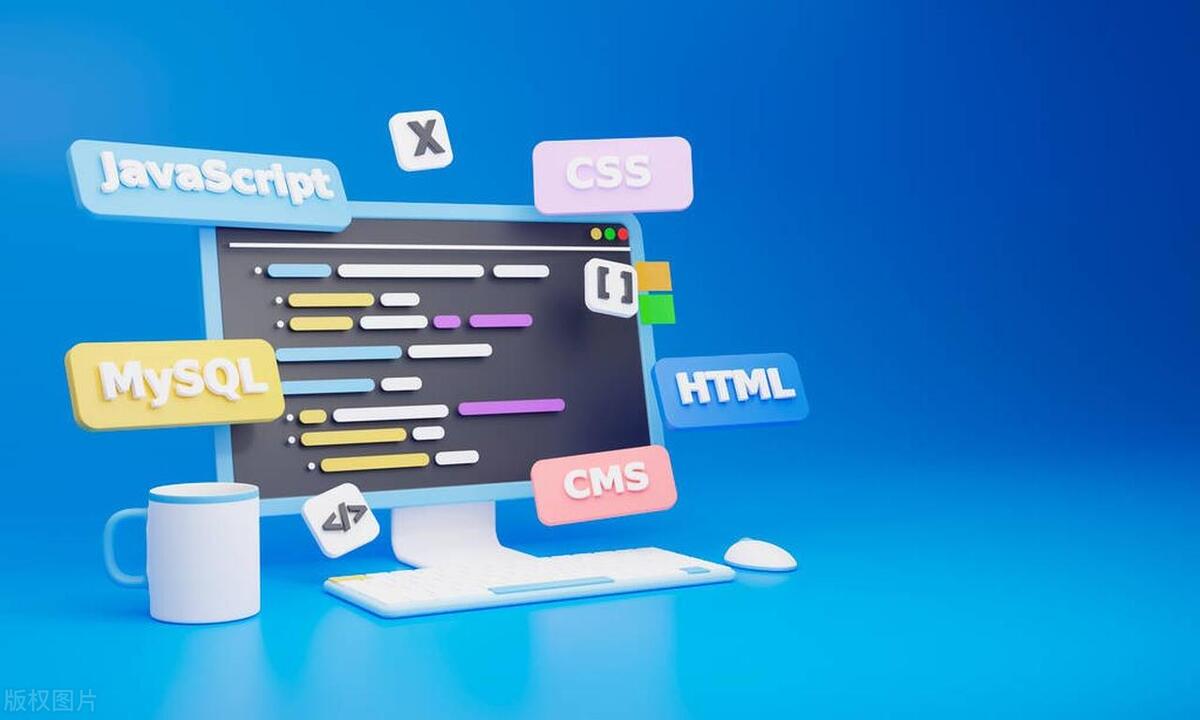Use Vue CLI or Vite to create TypeScript-enabled projects that can be quickly initialized through interactive selection features or using templates. Use the <script lang="ts"> tag in the component to implement type inference with defineComponent, and it is recommended to explicitly declare props and emits types, and use interface or type to define complex structures. It is recommended to explicitly label types when using ref and reactive in setup functions to improve code maintainability and collaboration efficiency.

The combination of Vue and TypeScript is becoming more and more popular, especially in medium and large projects. The type system can help you discover many potential problems in advance. If you have used Vue and now want to add TypeScript to enhance the maintainability of your code, this article is for you.

How to join TypeScript when creating a Vue project
The easiest way is to use Vue CLI or Vite to create a project that supports TypeScript. Take Vue CLI as an example:

- Install the latest version of Vue CLI (if not installed):
npm install -g @vue/cli - Create a project:
vue create your-project-name - Select "Manually select features" in the interactive interface
- Check TypeScript, Babel, Router and other functions you need
- Next, press Enter or follow the prompts
The generated projects have already integrated TypeScript and are configured with tsconfig.json and related plug-ins (such as ts-loader and fork-ts-checker-webpack-plugin ).
If you are using Vite, you can initialize a Vue TypeScript project more quickly:

npm create vite@latest my-vue-ts-app --template vue-ts
Then go to the directory to install the dependency and it is completed.
Using TypeScript in Vue Components
TypeScript is mainly implemented through the <script lang="ts"> tag in .vue Vue single file component. You can use defineComponent to wrap your component definitions, which allows TypeScript to better infer props, emits, and other information.
For example:
<script lang="ts">
import { defineComponent } from 'vue'
export default defineComponent({
props: {
title: {
type: String,
required: true
}
},
setup(props) {
// Here you can directly access props.title, and there is a type prompt return {}
}
})
</script>Here are a few tips:
- Using
setup()function with the Composition API will work more naturally with TypeScript - Clearly declare types for props and emits to avoid using any
- Interface or type can be introduced to define complex object structures to improve readability and reusability
Tips for type definition and interface design
One of the biggest advantages of TypeScript is the type system. In Vue projects, using types reasonably can help you reduce bugs and improve collaboration efficiency.
For example, suppose you have a user information component and need to receive a user object as a prop. You can do this:
interface User {
id: number
name: string
email?: string
}Then use it in the component like this:
props: {
user: {
type: Object as PropType<User>,
required: true
}
} Note: To use PropType here, you need to import it from vue :
import type { PropType } from 'vue' In addition, if you use responsive data in the setup function, it is recommended to explicitly label the types when using ref and reactive :
const count = ref<number>(0)
const user = reactive<User>({
id: 1,
name: 'Alice'
})These details can make IDE prompts more accurate and make it easier for other developers to understand your code.
Basically that's it. Vue and TypeScript are not complicated to cooperate, but to truly take advantage of the type system, you still have to spend more time on structural design and type definition.
The above is the detailed content of Vue with TypeScript Integration Guide. For more information, please follow other related articles on the PHP Chinese website!

Hot AI Tools

Undress AI Tool
Undress images for free

Undresser.AI Undress
AI-powered app for creating realistic nude photos

AI Clothes Remover
Online AI tool for removing clothes from photos.

Clothoff.io
AI clothes remover

Video Face Swap
Swap faces in any video effortlessly with our completely free AI face swap tool!

Hot Article

Hot Tools

Notepad++7.3.1
Easy-to-use and free code editor

SublimeText3 Chinese version
Chinese version, very easy to use

Zend Studio 13.0.1
Powerful PHP integrated development environment

Dreamweaver CS6
Visual web development tools

SublimeText3 Mac version
God-level code editing software (SublimeText3)

Hot Topics
 What are ARIA attributes
Jul 02, 2025 am 01:03 AM
What are ARIA attributes
Jul 02, 2025 am 01:03 AM
ARIAattributesenhancewebaccessibilityforuserswithdisabilitiesbyprovidingadditionalsemanticinformationtoassistivetechnologies.TheyareneededbecausemodernJavaScript-heavycomponentsoftenlackthebuilt-inaccessibilityfeaturesofnativeHTMLelements,andARIAfill
 How does React handle focus management and accessibility?
Jul 08, 2025 am 02:34 AM
How does React handle focus management and accessibility?
Jul 08, 2025 am 02:34 AM
React itself does not directly manage focus or accessibility, but provides tools to effectively deal with these issues. 1. Use Refs to programmatically manage focus, such as setting element focus through useRef; 2. Use ARIA attributes to improve accessibility, such as defining the structure and state of tab components; 3. Pay attention to keyboard navigation to ensure that the focus logic in components such as modal boxes is clear; 4. Try to use native HTML elements to reduce the workload and error risk of custom implementation; 5. React assists accessibility by controlling the DOM and adding ARIA attributes, but the correct use still depends on developers.
 How to minimize HTTP requests
Jul 02, 2025 am 01:18 AM
How to minimize HTTP requests
Jul 02, 2025 am 01:18 AM
Let’s talk about the key points directly: Merging resources, reducing dependencies, and utilizing caches are the core methods to reduce HTTP requests. 1. Merge CSS and JavaScript files, merge files in the production environment through building tools, and retain the development modular structure; 2. Use picture Sprite or inline Base64 pictures to reduce the number of image requests, which is suitable for static small icons; 3. Set browser caching strategy, and accelerate resource loading with CDN to speed up resource loading, improve access speed and disperse server pressure; 4. Delay loading non-critical resources, such as using loading="lazy" or asynchronous loading scripts, reduce initial requests, and be careful not to affect user experience. These methods can significantly optimize web page loading performance, especially on mobile or poor network
 Describe the difference between shallow and full rendering in React testing.
Jul 06, 2025 am 02:32 AM
Describe the difference between shallow and full rendering in React testing.
Jul 06, 2025 am 02:32 AM
Shallowrenderingtestsacomponentinisolation,withoutchildren,whilefullrenderingincludesallchildcomponents.Shallowrenderingisgoodfortestingacomponent’sownlogicandmarkup,offeringfasterexecutionandisolationfromchildbehavior,butlacksfulllifecycleandDOMinte
 What is the significance of the StrictMode component in React?
Jul 06, 2025 am 02:33 AM
What is the significance of the StrictMode component in React?
Jul 06, 2025 am 02:33 AM
StrictMode does not render any visual content in React, but it is very useful during development. Its main function is to help developers identify potential problems, especially those that may cause bugs or unexpected behavior in complex applications. Specifically, it flags unsafe lifecycle methods, recognizes side effects in render functions, and warns about the use of old string refAPI. In addition, it can expose these side effects by intentionally repeating calls to certain functions, thereby prompting developers to move related operations to appropriate locations, such as the useEffect hook. At the same time, it encourages the use of newer ref methods such as useRef or callback ref instead of string ref. To use Stri effectively
 Vue with TypeScript Integration Guide
Jul 05, 2025 am 02:29 AM
Vue with TypeScript Integration Guide
Jul 05, 2025 am 02:29 AM
Create TypeScript-enabled projects using VueCLI or Vite, which can be quickly initialized through interactive selection features or using templates. Use tags in components to implement type inference with defineComponent, and it is recommended to explicitly declare props and emits types, and use interface or type to define complex structures. It is recommended to explicitly label types when using ref and reactive in setup functions to improve code maintainability and collaboration efficiency.
 How to handle forms in Vue
Jul 04, 2025 am 03:10 AM
How to handle forms in Vue
Jul 04, 2025 am 03:10 AM
There are three key points to be mastered when processing Vue forms: 1. Use v-model to achieve two-way binding and synchronize form data; 2. Implement verification logic to ensure input compliance; 3. Control the submission behavior and process requests and status feedback. In Vue, form elements such as input boxes, check boxes, etc. can be bound to data attributes through v-model, such as automatically synchronizing user input; for multiple selection scenarios of check boxes, the binding field should be initialized into an array to correctly store multiple selected values. Form verification can be implemented through custom functions or third-party libraries. Common practices include checking whether the field is empty, using a regular verification format, and displaying prompt information when errors are wrong; for example, writing a validateForm method to return the error message object of each field. You should use it when submitting
 Server-Side Rendering with Next.js Explained
Jul 23, 2025 am 01:39 AM
Server-Side Rendering with Next.js Explained
Jul 23, 2025 am 01:39 AM
Server-siderendering(SSR)inNext.jsgeneratesHTMLontheserverforeachrequest,improvingperformanceandSEO.1.SSRisidealfordynamiccontentthatchangesfrequently,suchasuserdashboards.2.ItusesgetServerSidePropstofetchdataperrequestandpassittothecomponent.3.UseSS






